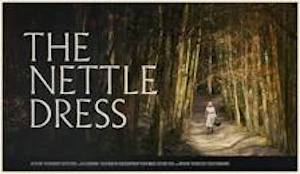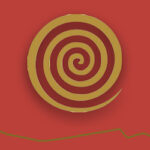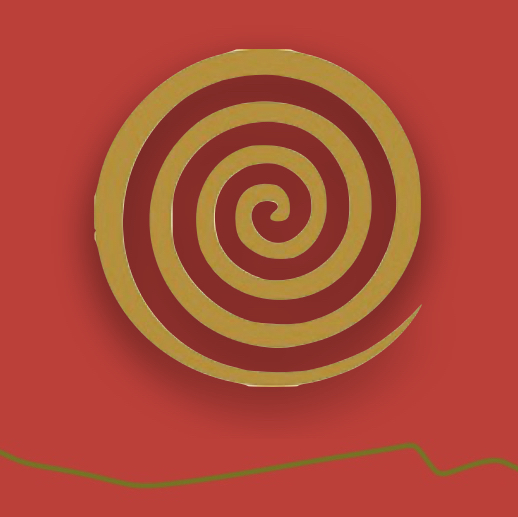Our appreciation of mythology as a symbolic language is central to the contemporary relationship to myth. As people bound to a psychological view of the inner life, myth as metaphor is the key to understanding the old stories. And yet, myth is more than metaphor.

The elements in a story, the specific animals, plants, and features of the land that are named in a given story, are more than artistic details. Investigation into the scientific as well as the mythic biography of these elements can result in discoveries that enhance your appreciation of the story and expand your original insights.
In this episode, our exploration of the stinging nettles in “The Wild Swan” takes us further into the world of the story and a psychology of craft for today.
“Working so slowly by hand is transformative, bringing up different conceptions of time and questions of what constitutes value.” — Dylan Howitt , filmmaker, “The Nettle Dress”

Transcript of A psychology of craft: the shirt of stinging nettles
Hello, and welcome to Myth Matters, storytelling and conversation about mythology and what myth can offer us today. I’m your host and personal mythologist Dr. Catherine Svehla. Wherever you may be in this wide, beautiful, crazy world of ours, you are part of this story circle.
Our appreciation of mythology as a symbolic language is central to the contemporary relationship to myth. As people bound to a psychological view of the inner life, myth as metaphor is the key to understanding the old stories. And yet, myth is also more than metaphor. The work of archeologists, geologists, and others often reveals a history of material events– a past flood, for example, that correlates with ancient myths.
Myths speak to the inner life and they are translations of outer experience as well.
In addition, the elements in a story, the specific animals, plants, and features of the land that are named in a given story, are more than artistic details. They carry the facts of their unique material existence as we understand them. What humans have observed about them and how they live is the origin of the symbol or metaphor. It was inspired by science. Our stories are rooted in our environment and the natural life is the catalyst for scientist and poet.
Meanings accumulate as the symbol becomes part of our cultural creations, while the living animal or plant, the rock or the stream, continues to be an earthly companion.
Investigation into the scientific as well as the mythic biography of these elements can result in discoveries that enhance your appreciation of the story. They tell us something about the place, time, and people who told the story long ago. And they are a form of the variations between stories. We know that the themes and plotlines of stories are used over and over again. Moving between variations on a given plot reveals the complexity of experience conveyed by the stories as a group and by a specific story, and it lends nuance to the insight we might glean from them.
Let’s think about this with the aid of the story I told in the last episode, the fairy tale called “The Wild Swans.”
In this story, the wicked queen curses the eleven princes. They are turned into swans and can only regain their human form at night. The brothers fly away. The queen also forces the sister into exile and she resolves to find her brothers. The twelve siblings are reunited. An old woman comes to the sister in a dream and tells her how she can reverse the spell and restore her brothers to full time human form. She must make shirts from the flax of the stinging nettle plant and she must complete this painful and time-consuming task in silence.
There are other fairy tales about brothers who are turned into wild birds and are saved by their sister. The sister in these stories must make a difficult journey, suffer, and make something that performs the magic to break the spell. The variations on the theme of the enchanted brothers saved by their sister, through some active craft and endurance on her part, can deepen our understanding of this pattern and how it shows up in our lives.
In other words, if you found that story interesting or if you like this particular train of thought, you might look into some of the stories. And when you survey the other stories, or if you simply take my word for it, you’ll see that making shirts of stinging nettles is a defining characteristic of “The Wild Swans” story.
So, what can be learned about the nettles?

Nettle is a flowering, herbaceous, perennial plant. It grows 3 to 7 feet in the summer and dies back to the ground in winter. It’s ability to sustain itself, to return year after year, and it’s form of reproduction, is via rhizomes. It’s a rhizome. plant. It spreads underground. The leaves and stems are covered in tiny hairs. The hairs of the stinging nettle, which is not the only type of nettle, are like little needles that inject chemicals and histamine that irritate the skin. The botanical name for the plant, Urtica Dioica, comes from the Latin meaning “to sting.”
Stinging nettle, or common nettle, is native to Europe and especially plentiful in northern Europe, which is where this story originated. Nettle is still easy to find there. The plant needs moist soil. It prefers disturbed areas, areas that we now refer to as “wastelands,” like the periphery of building sites and along roadsides. Nettles also like well fertilized soil, and they grow well in places where there’s a lot of animal dung, human waste, or other sources of phosphate and nitrogen.
The presence of nettles correlates with human habitation and fertile soil. Gardeners who are familiar nettles use the presence of the plant as an indication that that soil is a good place to grow things.
In our story, the sister is told that she must use nettles gathered from around the cave where she’s living with her swan brothers or around the graves in a churchyard. Nettles fertilized by the droppings of her swan brothers or by dead bodies. What connection do you see here? Maybe a relationship between the transformation of swan and human forms, and the death of a psychic self? Interesting that nettles are the larval food for several species of butterfly, one of our primary metaphors for transformation.
Butterflies eat nettles and humans can eat nettles too. And have and still do. A few minutes of boiling neutralizes the stinging chemicals. Nettles are full of vitamins and minerals like iron, chlorophyll, and vitamin C and have been made into tonics, soups, pesto, and porridge.
In the past, nettles also had a range of household uses. In Discovering the Folklore of Plants- interesting book, I’ll post a link on the website– Margaret Baker writes, “Nettle oil preceded paraffin; the juice curdled milk and helped to make Cheshire cheese; nettle juice seals leaky barrels; nettles drive frogs from beehives and flies from larders; nettle compost encourages ailing plants; and fruits packed in nettle leaves retain their bloom and freshness.”
The plant also has a long history of medicinal use for animals and humans. Nettles have been used to promote lactation in nursing mothers, fight fever and infections, treat rheumatism and arthritis, strengthen the immune system, and as I recently discovered, relieve allergy symptoms.
Earlier this year, in a decision that had nothing to do with this story– until now, that is– I started taking a nettle supplement every day to see if it would help with my seasonal allergies. This has been more effective than anything else I’ve tried. My symptoms have almost completely disappeared. I was interested to learn that the histamines in nettles that cause the contact dermatitis when you touch the plant, in other forms, in a tea or ground up as a dietary supplement, help regulate the body’s histamine response.
The circumstances of an encounter and the form it takes matter. This is true of plants and everything else in life. And the “things” in this world are more than resources or raw materials. They are our muses and inspiration for action, and our companions in the creative process called “life.”
Nettle is one of the nine plants invoked in the Anglo-Saxon Nine Herbs charm, recorded in the10th century. Other herbs mentioned in this charm include mugwort, chamomile, and fennel. All nine of the plants are used by herbalists today. The old Nine Herbs charm honors the plants and their qualities and includes a recipe.
The charm was part of the recipe. The recipe was part of the charm. The words and the action of the hands, the knowledge, feeling, and intuition combined. This reminds me of an observation by C.G. Jung, drawn from his work with patients and his personal life: the hands can complete things that the mind cannot resolve.
Turning back to our story, the nettle shirts that the sister must make for her brothers is more than a poetic image of sisterly devotion. Nettles, like hemp and linen, have been used to make clothing for thousands of years. In fact, Bronze Age nettle textiles have been found in Denmark and there are references to nettle clothing in our historical records. Nettle, like flax and hemp, was a staple source of thread and yarn into the early 18th century, used to make everything from clothing, sheets and table linens, to rope, sacks, and sailcloth.

Stripping the hairs from the stalks, then breaking them down and allowing them to dry in a process called “retting”– alluded to in the fairy tale– results in fibers that can be spun into thread and woven into a comfortable and durable cloth. The people who first told this story were likely aware of the many useful qualities of stinging nettles. And now, we are too.
The sister in our story must do her gathering, spinning, weaving, and sewing in silence. She is told not to speak at all until the last shirt is complete. Whatever charms took shape in her heart and mind, she had to recite to herself. This type of silence is emblematic of a deep inner process, a sustained concentration of energy.
I imagine the plant as the sister’s sole companion in her important work, and all of the grief and hope these fibers absorbed in the long hours, filling her heart, expressed through her hands. Such a beautiful image of soul work, of soul-making, which is the formation of a genuine human being.
This meditation on nettles led me to the work of Allan Brown, a textile artist living in Brighton East Sussex. Brown is known for his work with natural, local materials. Inspired by the fairy tale “The Wild Swans,” and in response to the death of his father and his wife, Brown spent seven years with the stinging nettle, gathering the plant from locations near his home, retting, spinning, weaving, and sewing his cloth into a dress that is now worn by his youngest daughter.
In his poem “The Nettle Dress,” Brown writes:
“Once lost upon
the stormy Downs,
I had a vision
of a gown
That clothed a creature,
wild and free,
whose soul was full
of mystery.
Her form was shaped
by golden threads,
spun by the living
from the dead.”
The sister in the fairy tale, Brown says, felt like his muse. He was called to work with the nettles rather than hemp or flax, other materials with which he is familiar, because the process is so very labor intensive. Seven years to make the dress, most of that time spent spinning. Time to reflect and remember and grieve. Time to sift through the possibilities in the present. To be present. To re-imagine the future.
Brown writes, ” It was as if all the single narrative threads were becoming material – quite literally – like the thoughts, feelings, birdsong, weather and conversations that had been spun into the yarn were now laying together, over and under each other, telling a fuller story as woven cloth.”
Brown collaborated with the film-maker Dylan Howitt in the years of making this dress. Brown’s website includes a lovely short video of Brown working with the nettles, describing the process, and talking about the possibilities a wild plant like the nettle offers to our time. Nettles are free, forgeable, and renewable, he says. They are the “fibre of the landless” and produce a fabric for free.
And to this I add the sentiments of many modern herbalists, who point out the ready availability of a great many medicines, right outside, right outside our door, that require no prescription, no doctor, and no dollars. And are also a meaningful action against the capitalist pharmaceutical companies.

The beauty and the depth in Brown’s project inspired a full-length movie “The Nettle Dress” –“A modern day fairytale and hymn to the healing power of nature and slow craft.”It looks beautiful. The trailer is available on the website. I’ll post links to these on the Mythic Mojo website as part of the transcript for this episode.
Allan Brown, today, like our fairy tale sister in the once upon a time, worked his grief and the nettle plant at the same time, removing and reducing the sting, letting grief take shape as threads in the hand, and in the cloth under the hands, and ultimately creating something, durable and comfortable and beautiful. What can be healed and transformed, I wonder, if we have the love and the courage to persevere through discomfort, to make the tedium into a meditation that binds grief and joy together?
Well, there’s a lot in those nettle plants, isn’t there?
And now, a big welcome to new email subscribers: Sharon, Barbara, Christophe, LeAnn, and Luke. Welcome to Myth Matters! If you’re new to Myth Matters, I invite you to head over to the Mythic Mojo website. You’ll find a transcript of this episode, information about Story Oracle readings and my consulting services and how you can work with me one on one, if you are interested.
Long before our contemporary models of psychotherapy and life coaching, there was storytelling, divination, and what I call mentorship in the mythic dimension of life. Check it out. And you can also join the email list, if you’d like to receive links to new Myth Matters episodes in your inbox.
Thank you, thank you, thank you to the patreon patrons and bandcamp supporters of Myth Matters. A shout out to new patron: Pam. Thank you Pam! If you’re finding something of value here at Myth Matters, I hope you’ll consider joining me on patreon.
Stepping into reciprocity is part of our shared awakening. If finances are tight for you– it’s fine I understand. It’s responsible to think about that. You might post a review of Myth Matters instead, leave a comment on the Mythic Mojo website, or send me an email. I love hearing from you.
If we have a better understanding of our need for myth my friend, and all -all- that our old stories offer, we can live more satisfying lives. We can inhabit a better story and create a more beautiful, just and sustainable world.
Feel free to email me in response to this episode. If you have questions about mythology, I’ll do my best to answer them.
And that’s it for me, Catherine Svehla and Myth Matters. Thank you so much for listening. Take good care of yourself and until next time, keep the mystery in your life alive.
Links:
Discovering the Folklore of Plants by Margaret Baker
Hedgerow Medicine by Julie Bruton-Seal & Matthew Seal
Allan Brown’s ‘Nettles For Textiles’ website which includes a 16 minute video



Leave a Reply